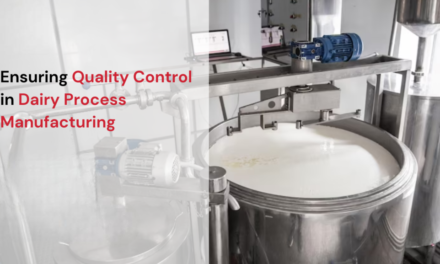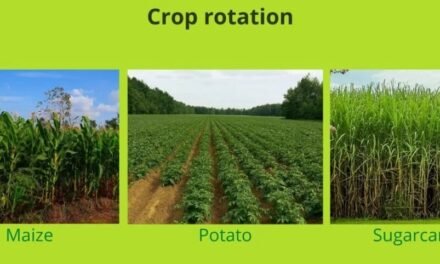Food companies measure the carbon footprint of their packaging to assess its environmental impact and identify opportunities for improvement. This process involves quantifying greenhouse gas (GHG) emissions across the packaging’s lifecycle, from raw material extraction to disposal. Here’s how they do it:
1. Lifecycle Assessment (LCA)
- What It Is: A comprehensive method to evaluate the environmental impact of packaging across its entire lifecycle.
- Steps:
- Goal and Scope Definition: Determine the boundaries of the assessment (e.g., cradle-to-grave or cradle-to-gate).
- Inventory Analysis: Collect data on energy use, raw materials, transportation, and waste for each stage of the lifecycle.
- Impact Assessment: Convert inventory data into environmental impact metrics, such as CO₂ equivalents (CO₂e).
- Interpretation: Analyze results to identify hotspots and recommend improvements.
- Example: A company assessing emissions from sourcing recycled paper for a box, manufacturing it, transporting it, and its end-of-life disposal.
2. Carbon Accounting Software
- What It Is: Tools that simplify the calculation of carbon emissions by automating data analysis.
- Features:
- Integration with supply chain data.
- Emission factor databases for various materials and processes.
- Visualization and reporting tools for easy interpretation.
- Examples: SimaPro, GaBi, or Carbon Trust tools.
3. Emission Factor Databases
- What It Is: Databases provide standardized emission factors for materials, processes, and energy sources.
- How It’s Used:
- Companies use emission factors to estimate GHG emissions for activities like plastic production, transportation, and incineration.
- Examples: EcoInvent, DEFRA (UK), and the U.S. EPA GHG Emissions Factors.
4. Material Analysis
- What It Is: Identifying the carbon impact of the raw materials used in packaging.
- Steps:
- Determine the type of materials (e.g., plastic, paper, aluminum).
- Assess the source (virgin vs. recycled content).
- Calculate emissions based on production processes.
- Example: Recycled PET generally has a lower carbon footprint than virgin PET.
5. Manufacturing Emissions
- What It Is: Evaluating the emissions generated during the production of packaging.
- Key Factors:
- Energy source (renewable vs. fossil fuel) used in manufacturing facilities.
- Efficiency of production processes.
- Example: Producing lightweight materials may reduce emissions by lowering energy demands.
6. Transportation Impact
- What It Is: Measuring emissions from transporting raw materials to factories and finished packaging to food companies.
- Key Factors:
- Distance traveled and transportation mode (e.g., road, sea, air).
- Load optimization to maximize efficiency.
- Example: Shipping packaging materials locally can reduce the carbon footprint compared to international sourcing.
7. End-of-Life Assessment
- What It Is: Estimating emissions based on how packaging is disposed of (e.g., recycling, landfill, incineration).
- Key Factors:
- Recycling rates and energy recovery in the region.
- Decomposition emissions for materials in landfills.
- Example: Compostable packaging that degrades into organic matter may have a lower footprint compared to non-recyclable plastic.
8. Supplier Collaboration
- What It Is: Partnering with suppliers to gather data on the carbon footprint of raw materials and production processes.
- How It Helps:
- Increases accuracy of emission calculations.
- Encourages suppliers to adopt greener practices.
- Example: Working with a paper supplier to track emissions from forestry to final product delivery.
9. Third-Party Certifications
- What It Is: Using certifications to validate the carbon footprint calculations.
- Examples:
- Carbon Trust Standard for Packaging.
- Cradle to Cradle Certification for Sustainable Materials.
- Benefits: Ensures transparency and credibility in carbon reporting.
10. Benchmarking and Reporting
- What It Is: Comparing the carbon footprint of different packaging options to identify more sustainable choices.
- How It Helps:
- Enables companies to track progress toward carbon reduction goals.
- Helps communicate sustainability efforts to stakeholders.
- Example: Comparing emissions from plastic vs. biodegradable vs. paper-based packaging.
Challenges in Measuring Carbon Footprints
- Data Availability: Limited access to detailed data from suppliers or downstream processes.
- Complexity of Global Supply Chains: Multiple suppliers and regions can complicate calculations.
- Variability in Emission Factors: Differences in production methods and energy sources across regions.
Conclusion
By using tools like lifecycle assessments, carbon accounting software, and supplier collaboration, food companies can accurately measure the carbon footprint of their packaging. This process helps identify areas for improvement, supports decision-making for sustainable packaging, and enhances transparency in sustainability reporting.
Hashtags
#SustainableLiving #ReduceReuseRecycle #EcoPackaging #SustainableChoices #GreenPackaging #EcoFriendlyChoices #SustainableFuture #EcoConsciousLiving #SustainableBusiness #EcoFriendlyBrands #SustainableMaterials #EcoPackagingDesign #SustainableConsumption #EcoFriendlyProducts #SustainableDevelopment #EcoPackagingTrends #SustainableSolutions #EcoFriendlyPackaging #SustainablePractices #EcoPackagingRevolution









